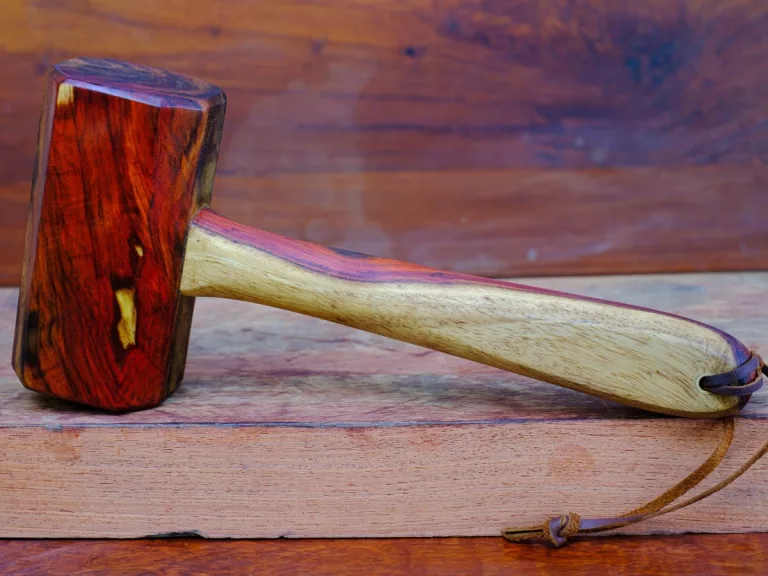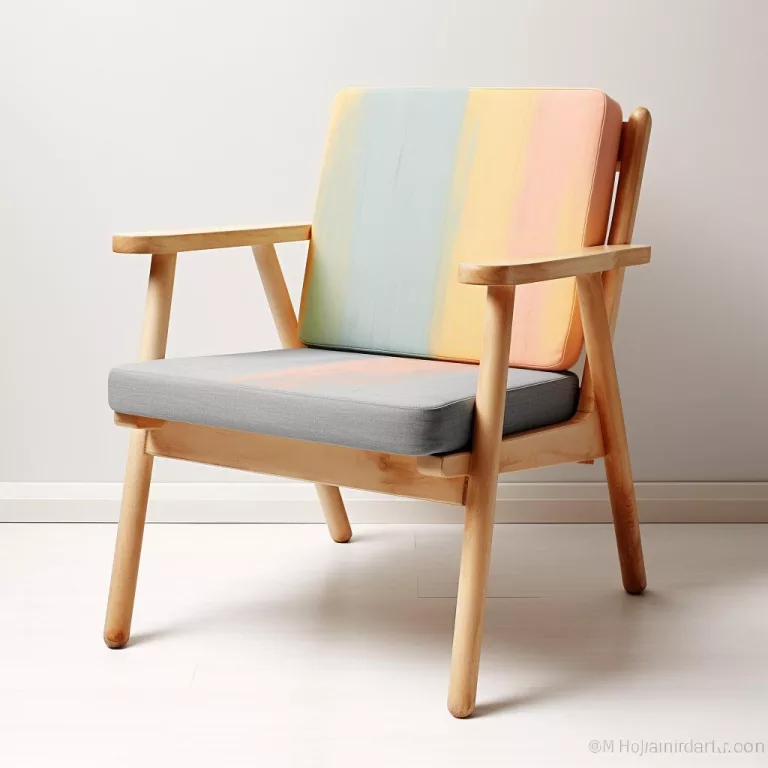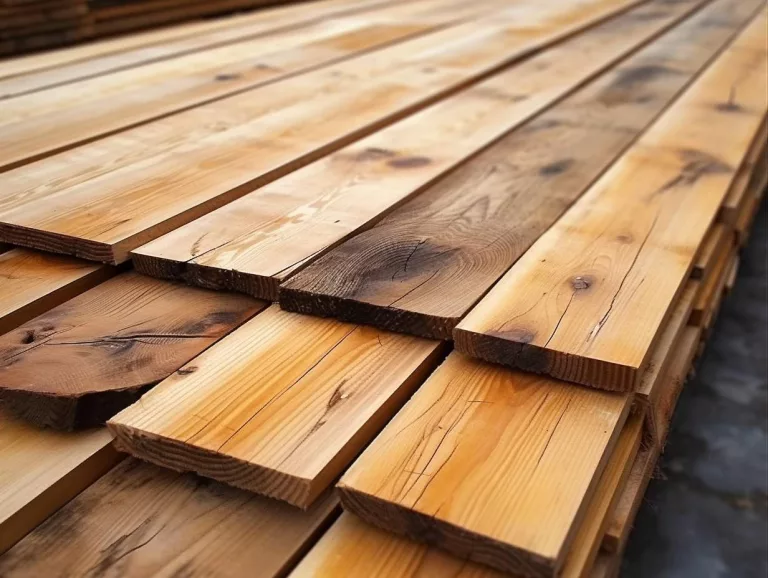4-Step Guide to Brilliant White Washed Oak Furniture
White washed oak furniture, with its sun-kissed hues and relaxed vibe, has become a cornerstone in homes seeking a blend of rustic warmth and modern minimalism. This style’s surge in popularity is no accident; it’s a response to the growing desire for interiors that speak to tranquility and natural beauty. White washing oak softens the dense, golden tones of the wood, offering a versatile palette that complements a wide range of color schemes and design aesthetics.
The technique of white washing has been reimagined over time, evolving from its utilitarian roots to become a beloved design choice. When applied to the sturdy, pronounced grain of oak, white washing illuminates the wood’s texture, creating a canvas that feels both refined and approachable. This transformative effect not only enhances the wood’s visual appeal but also allows oak furniture to seamlessly integrate into the contemporary home without losing its storied character.

What is White Wash Oak?
Defining White Wash Oak
At its core, white wash oak is the result of a delicate dance between paint and wood, where a diluted white pigment is applied to the oak’s surface. This technique allows the grain to shine through, resulting in a finish that’s as durable as it is graceful. It’s a finish that celebrates the oak’s natural beauty while infusing it with a fresh, modern spirit.
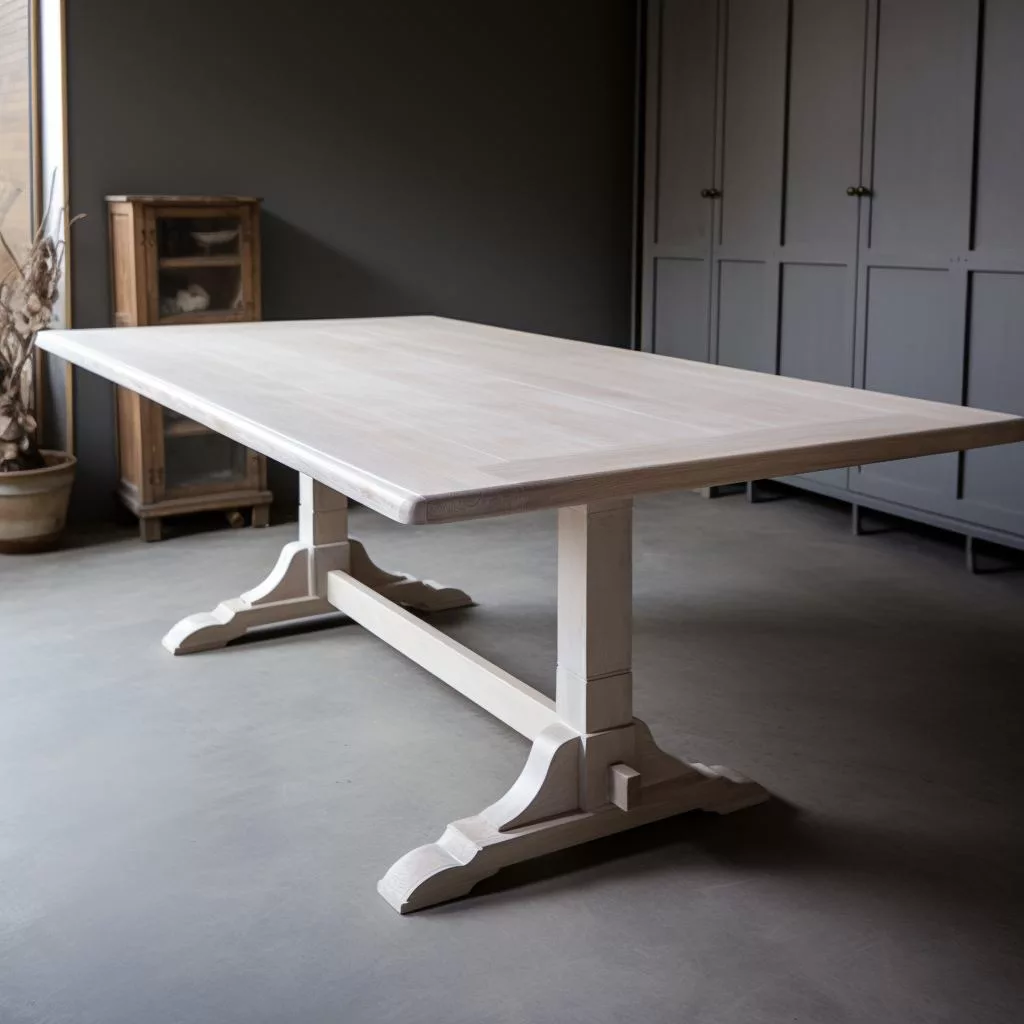
The Historical Journey of White Washing
White washing’s roots can be traced back centuries, originally serving as a means to protect and sanitize wood surfaces. Its evolution has been shaped by necessity and creativity alike, leading to its current status as a sought-after finish that bridges the gap between past and present, tradition and innovation.
The Aesthetic and Practical Benefits of White Washed Oak
The allure of white washed oak lies in its ability to transform the heavy appearance of traditional oak into something lighter and more ethereal. This process not only elevates the wood’s inherent beauty but also introduces a sense of spaciousness and calm to any room. Functionally, white washed oak item is celebrated for its versatility, easily adapting to an array of decorative styles from coastal to contemporary, making it a timeless choice for designers and homeowners alike.
The White Washing Process
An Overview of the White Washing Technique
White washing oak furniture is a transformative process that imbues the wood with a new lease on life. This age-old technique, which has been refined over generations, involves a delicate application of a white tint to the wood, enhancing its natural grain and character. The result is a finish that’s both rustic and refined, perfect for breathing new life into oak pieces.
Step-by-Step Guide: White Washing Oak Furniture
Embarking on a white washing project is a journey into the heart of woodworking. Here, we’ll guide you through the essential steps to achieve a professional and enduring white washed finish.
Step 1: Gathering Your Materials
Before beginning, assemble the necessary materials:
- White latex paint or a specialized white wash stain
- Water
- Mixing container
- Sandpaper (fine-grit)
- Paintbrushes or a clean rag
- Polyurethane sealant (optional for added durability)
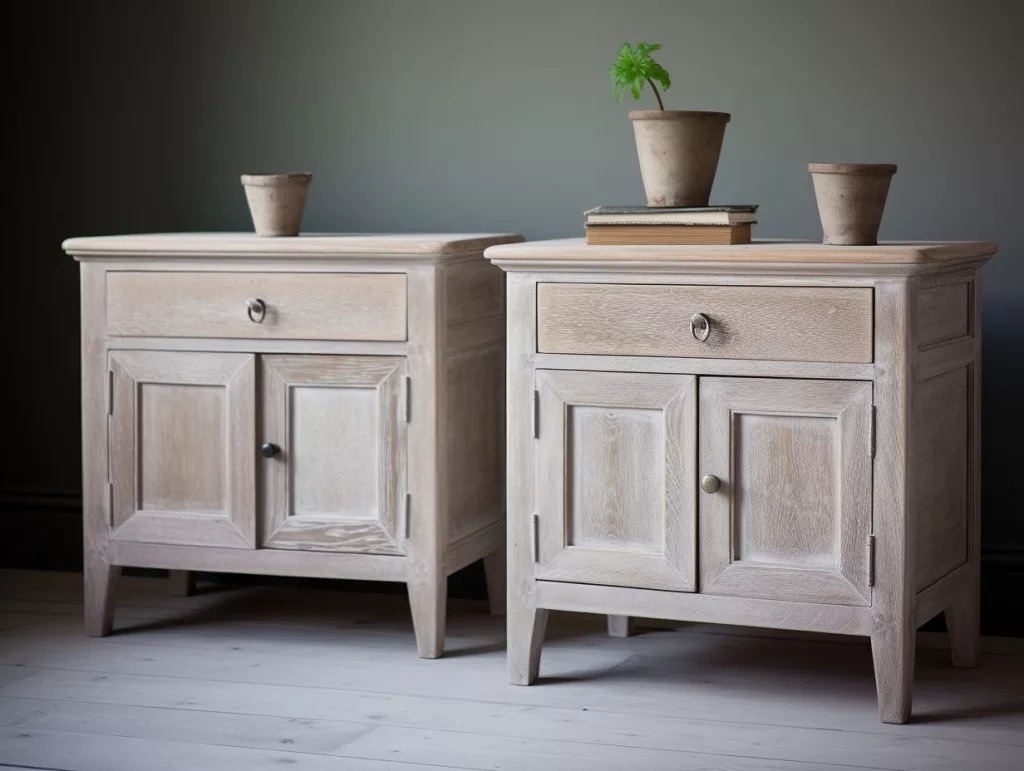
Step 2: Preparing the Oak Surface
Preparation is key. Start by sanding the oak furniture to remove any existing finish, ensuring the surface is smooth and even. Wipe away the dust with a damp cloth, allowing the wood to dry completely before proceeding to the next step.
Step 3: The Art of Mixing and Applying White Wash
Mix the white paint with water in a container, aiming for a consistency similar to heavy cream. Test the mixture on a scrap piece of wood to ensure the desired opacity. Apply the white wash to the oak furniture with a brush or rag, working in sections and using long, even strokes. Wipe away excess with a clean rag, allowing the grain to show through.
Step 4: Sealing the White Wash for Durability
Once the white wash has dried, consider sealing the furniture with a clear polyurethane sealant. This step is optional but recommended for surfaces that will see heavy use. Apply the sealant with a clean brush, following the manufacturer’s instructions for the best results.
You will love the following video on transforming an old oak coffee table.
Here’s another video on the white washing process.
Can Oak Be Whitewashed?
Assessing Oak’s Suitability for White Washing
Oak is a prime candidate for white washing, thanks to its pronounced grain and durability. However, the technique may vary slightly depending on the oak’s age and previous treatments, which can affect the absorption of the white wash.
Exploring the Different Types of Oak
Oak comes in various species, each with unique characteristics. White oak, with its closed grain, offers a smoother finish, while red oak’s open grain provides a more textured look. Understanding these nuances is crucial for achieving your desired outcome.
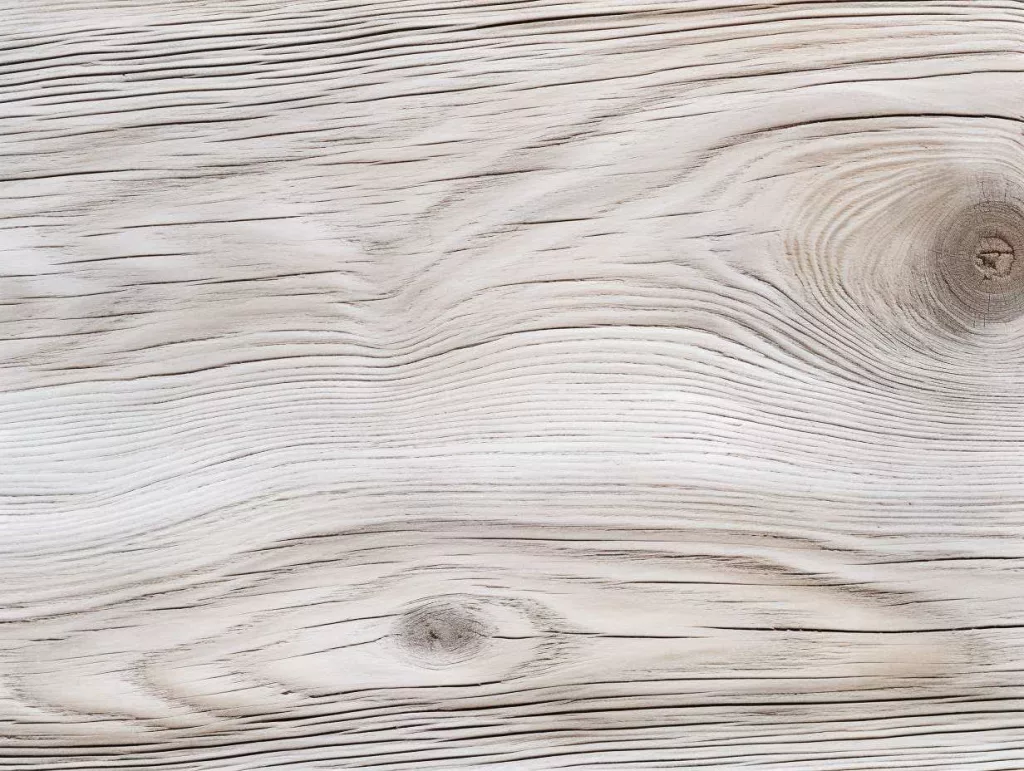
Expert Tips for Whitewashing Oak
Experts recommend using a water-based white wash stain for easier application and cleanup. Always test your technique on a small, inconspicuous area first. Remember, the goal is to enhance, not mask, the oak’s natural beauty.
Modernizing Oak Furniture with a White Wash Finish
The Role of White Washing in Modern Design
White washing oak furniture is not just a nod to the past; it’s a forward-thinking design choice that aligns perfectly with modern aesthetics. This technique lightens the wood’s appearance, making it an ideal match for contemporary design themes that favor clean lines and neutral palettes. It’s a transformative process that can update even the most traditional oak pieces to fit into the sleek, modern home.
Visual Transformations: Before and After
The impact of white washing on oak furniture is best appreciated through visual examples. Before and after photos reveal the stark transformation from the original, often darker wood to a lighter, more textured finish. This visual journey not only showcases the technique’s effectiveness but also serves as inspiration for those considering this style shift.
Styling White Washed Oak in Contemporary Spaces
Integrating white washed oak into contemporary spaces is about balance and harmony. The finish pairs well with bold colors and patterns, acting as a subtle backdrop that allows other design elements to shine. It also works beautifully with a monochromatic scheme, adding texture and depth to an otherwise minimalistic space. The key is to let the furniture’s refreshed look complement the room’s overall aesthetic.
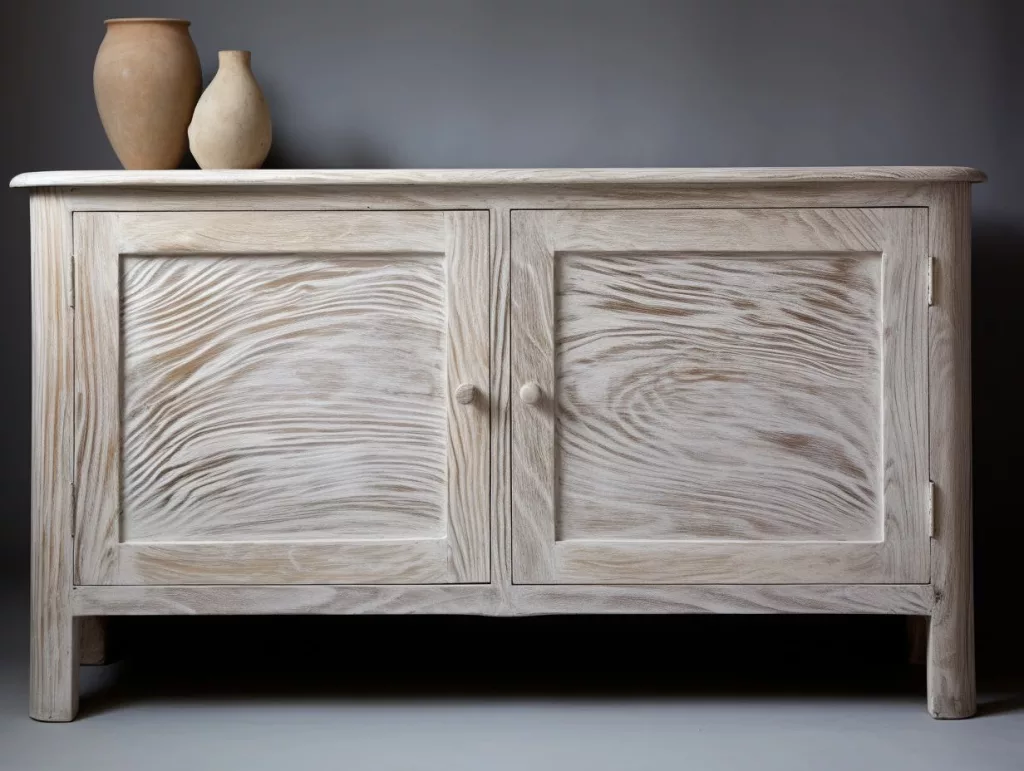
Maintenance and Care
Preservation
Maintaining the pristine condition of the furniture is crucial for its longevity. The finish is robust, but like all wood finishes, it benefits from regular care and attention. Protecting the furniture from excessive moisture and direct sunlight will help preserve the white wash’s integrity over time.
Routine Cleaning and Care Tips
For routine cleaning, a soft, damp cloth is often sufficient to remove dust and minor spills. Avoid harsh chemicals or abrasive cleaners, which can damage the finish. For deeper cleaning, a mild, soapy solution can be used sparingly, followed by a thorough drying with a soft cloth.
Addressing Wear and Tear: Touch-Up Strategies
Even with the best care, furniture may eventually show signs of wear. Fortunately, white washed oak is forgiving, and touch-ups can be done with ease. Light sanding and re-application of the white wash mixture in affected areas can restore the furniture’s appearance. For best results, always follow the original white washing process used on the piece.
Conclusion
The timeless allure of white washed oak furniture lies in its ability to marry the rustic, enduring qualities of wood with a fresh, contemporary finish. This style has stood the test of time, evolving through centuries to become a staple in modern interior design. Its enduring charm is a testament to its versatility and the effortless elegance it brings to any space. White washed oak pieces don’t just occupy a room; they elevate it, bringing with them light, texture, and a sense of peacefulness that is unmatched.
Related Links
- Quarter sawn oak items
- White oak for outdoor use
- White oak vs red oak
- Unfinished oaks
- Oaks superiority for furniture
- Furniture thoughts: white vs red oak
FAQs
What exactly does ‘white washed oak’ mean?
White washed oak refers to oak wood that has been treated with a white wash finish—a technique that involves diluting white paint and applying it to the wood to highlight its grain and texture while giving it a lighter appearance.
Can any type of oak furniture be white washed?
Most oak furniture can be white washed, regardless of whether it’s old or new. However, the existing finish and the oak species can affect the final look. It’s always recommended to test the white wash on an inconspicuous area first.
Does white washing oak furniture decrease its value?
White washing is generally considered an aesthetic improvement and can increase the appeal of the furniture in modern décor settings. However, for antique oak pieces, it’s best to consult with an antique expert as altering the original finish could affect the item’s value.
Is it necessary to seal white washed oak furniture?
Sealing is not mandatory but is recommended, especially for furniture that will be used frequently. A sealant can protect the finish from wear and tear and make it easier to clean.
How do you clean this furniture?
Use a soft, damp cloth to wipe down the furniture. Avoid harsh chemicals and excessive water. For deeper cleans, a mild soap solution can be used, followed by a dry cloth to prevent moisture retention.
Can white washed oak furniture be used outdoors?
It is primarily intended for indoor use. If you want to use it outdoors, ensure it’s properly sealed and protected from the elements, and choose a white wash product suitable for exterior use.
What should I do if the white wash finish on my furniture starts to wear off?
Minor wear can often add to the rustic charm of white washed furniture. For more significant wear, you can touch up the finish by lightly sanding the affected area and reapplying the white wash mixture.
How long does the white washing process take?
The time it takes can vary depending on the size of the piece and the number of coats applied. Generally, you should allocate a few hours for preparation, application, and drying time between coats.
Can I white wash over a previously stained or painted oak?
Yes, but the existing finish should be sanded down to ensure the white wash adheres properly and to achieve the desired look. Always clean the surface thoroughly after sanding before applying the white wash.
Is white washing an eco-friendly process?
White washing can be eco-friendly, especially if you use water-based paints and non-toxic sealants. Always check the labels of the products you’re using to ensure they meet your eco-friendly standards.



